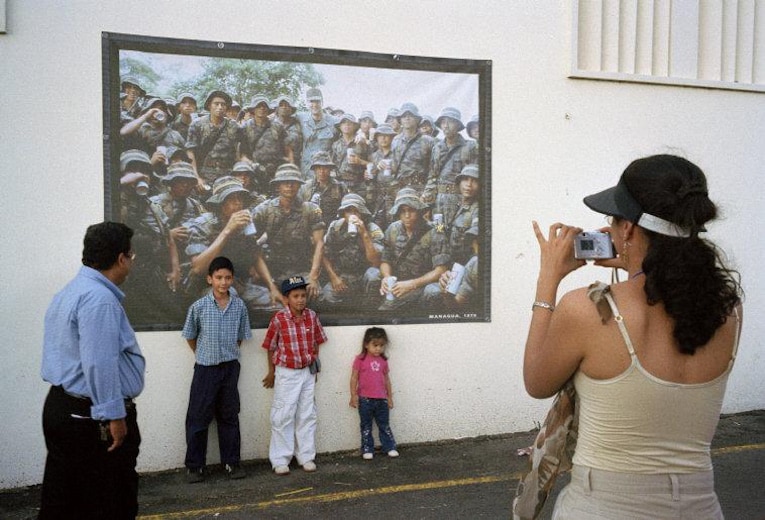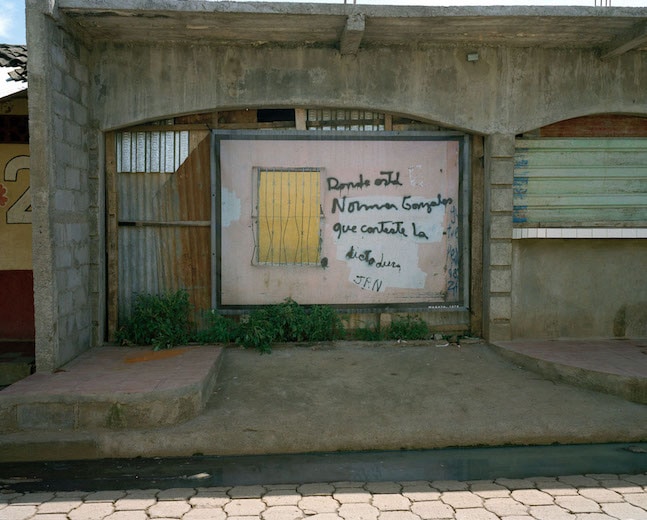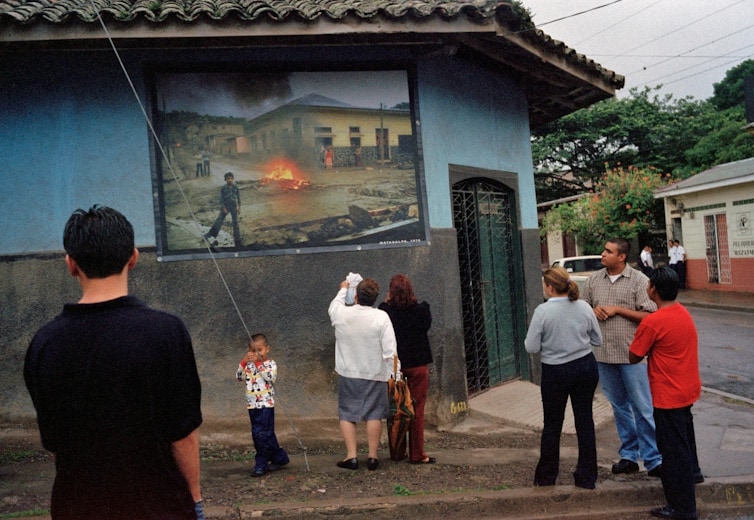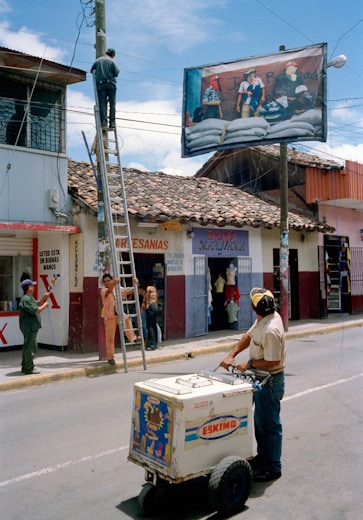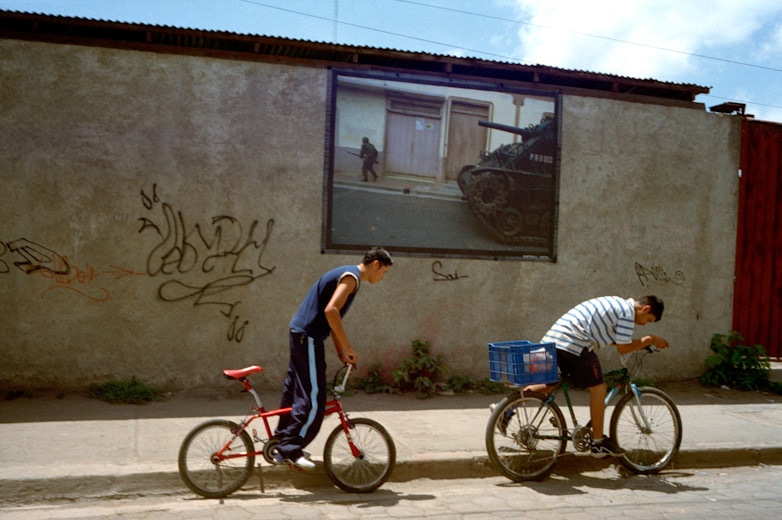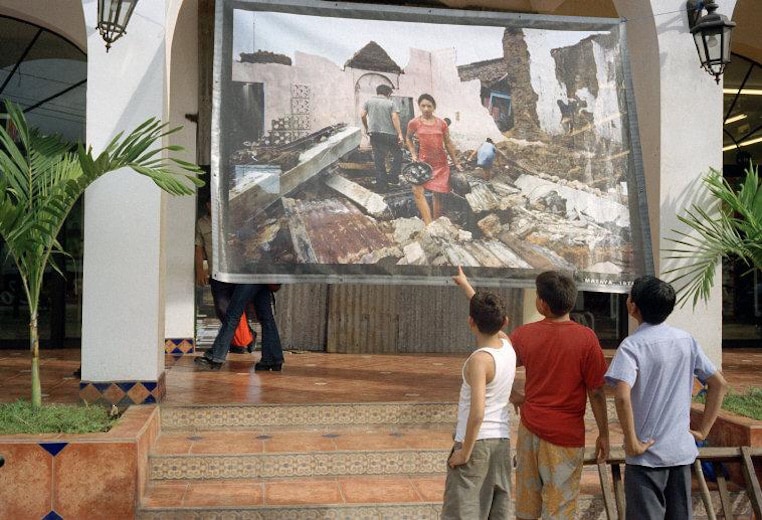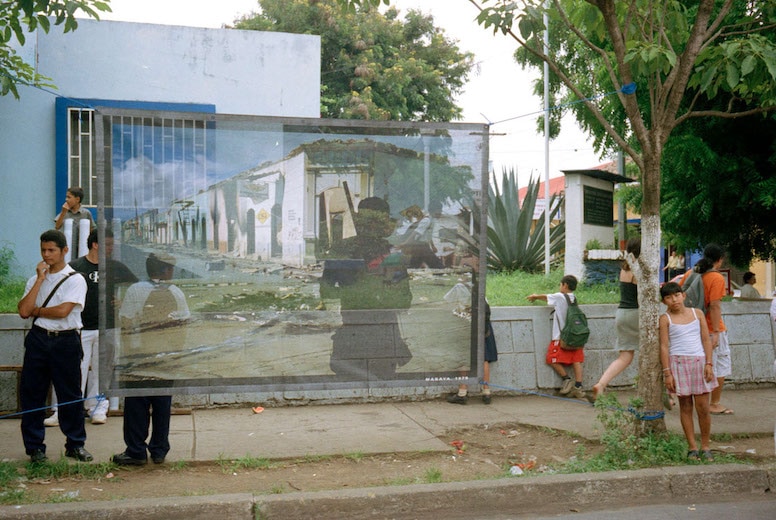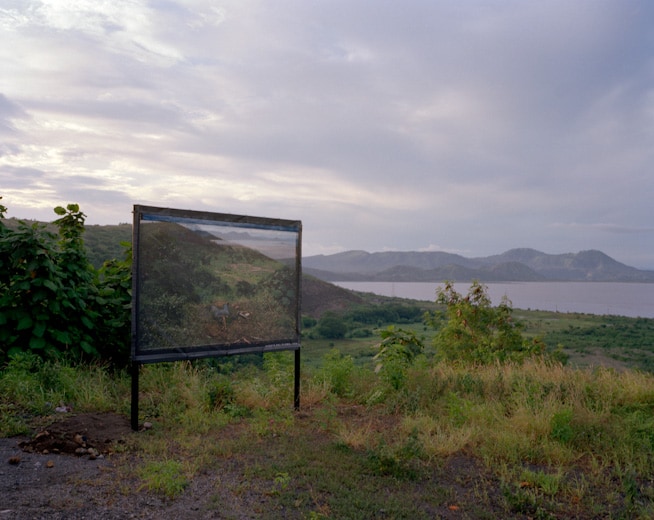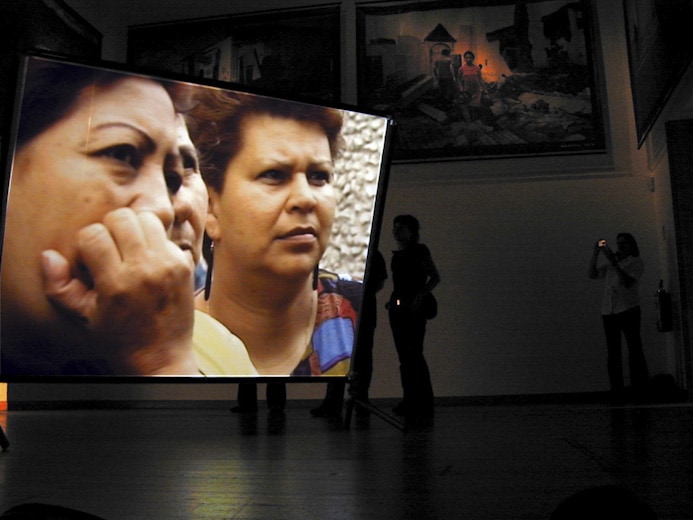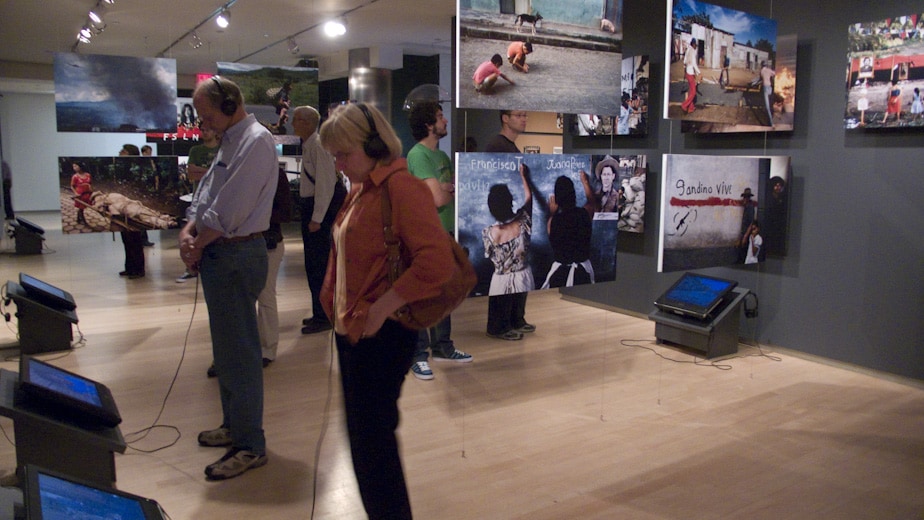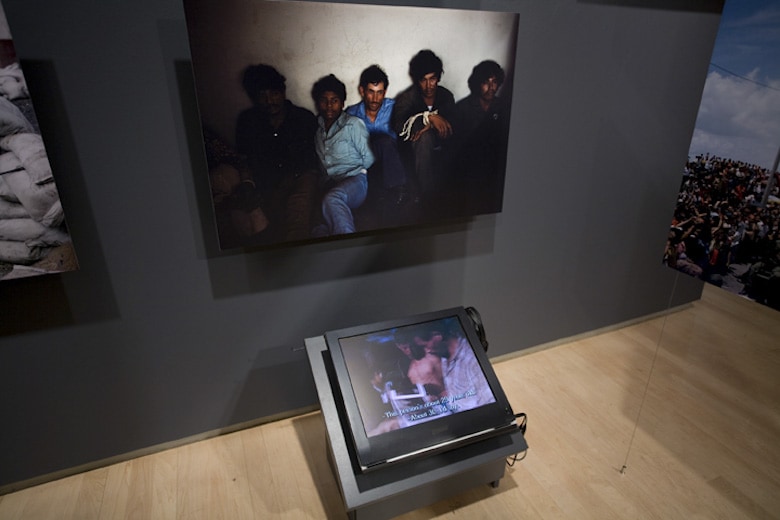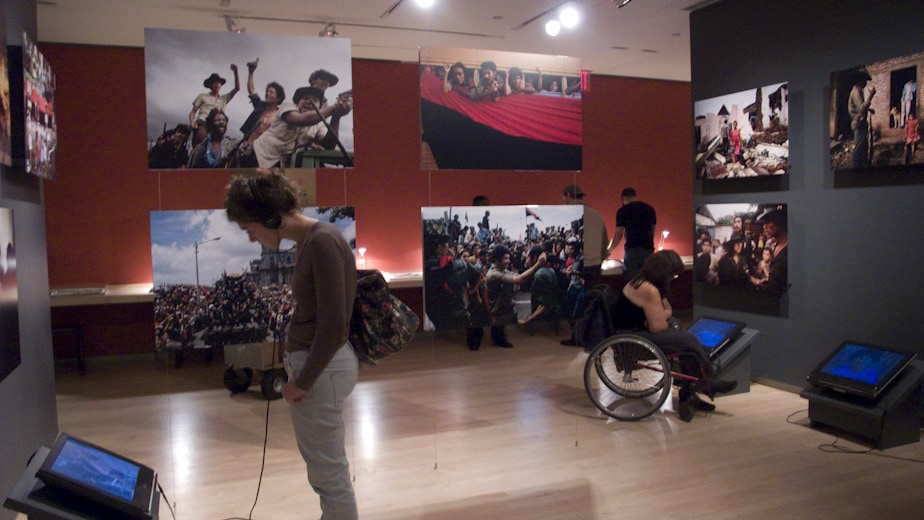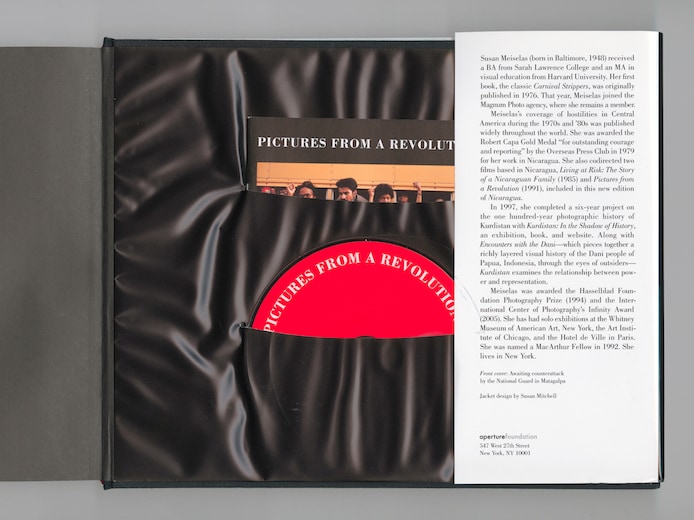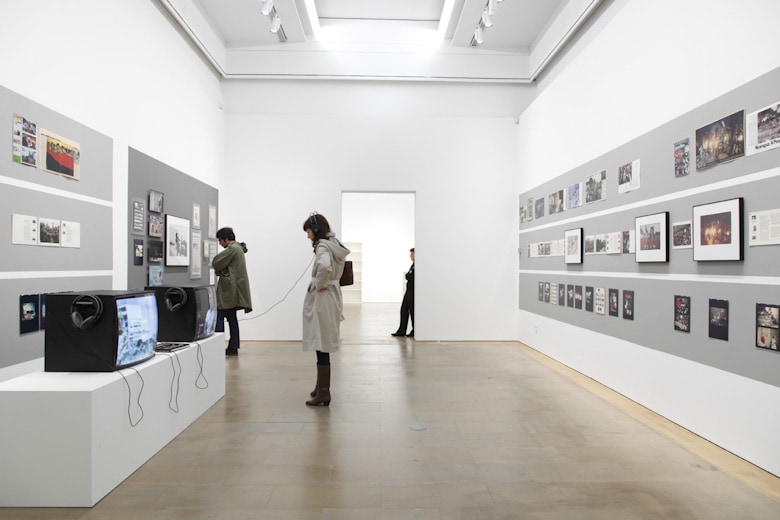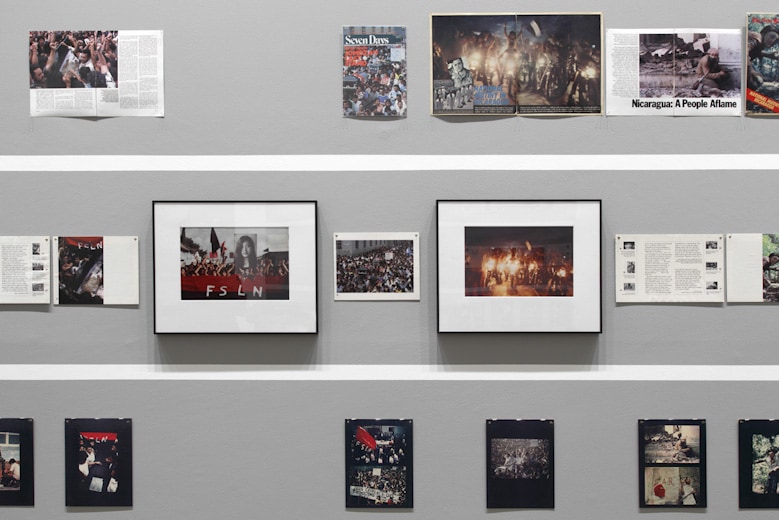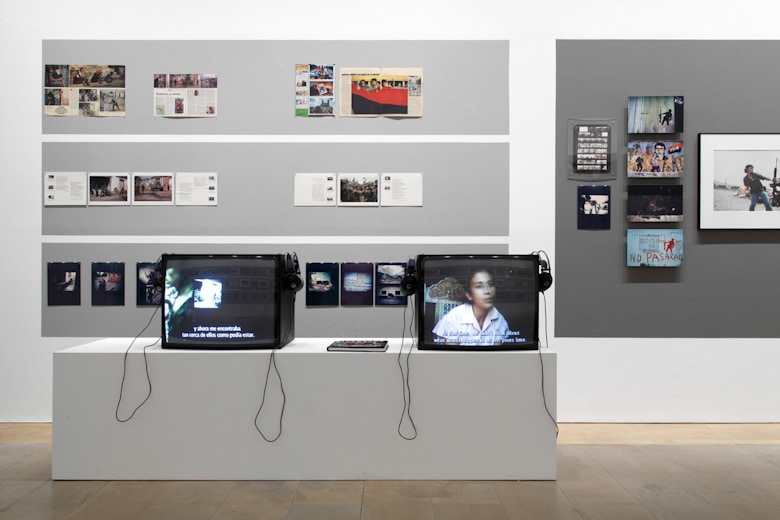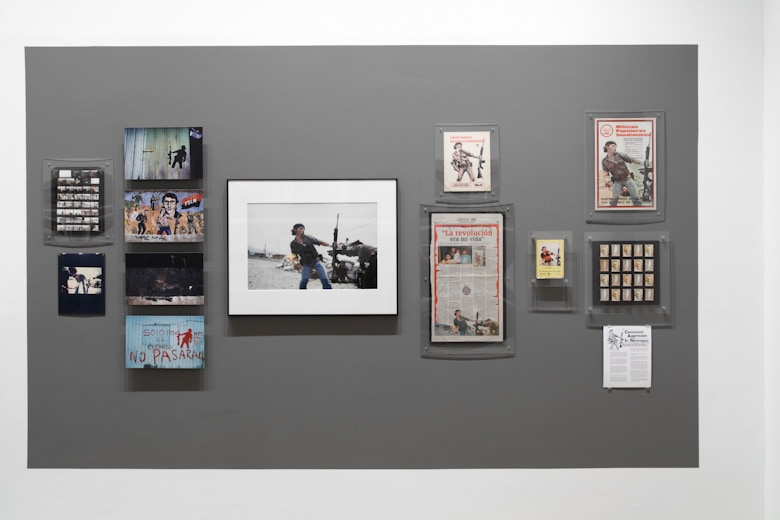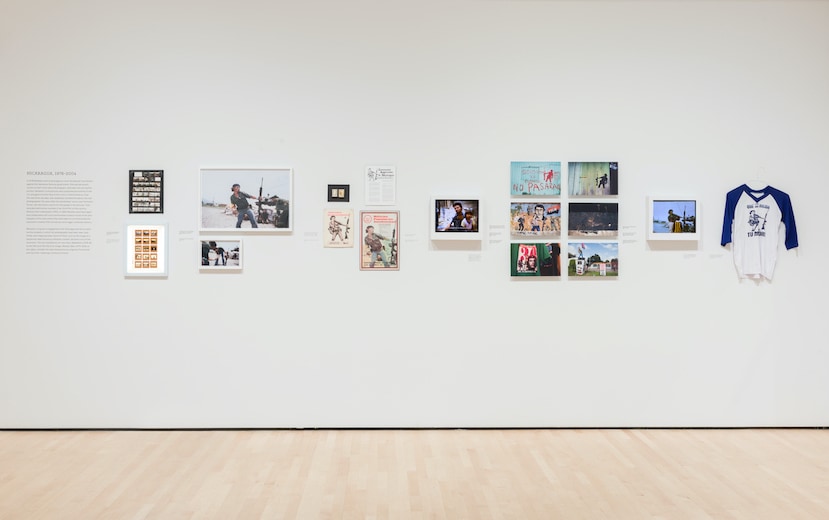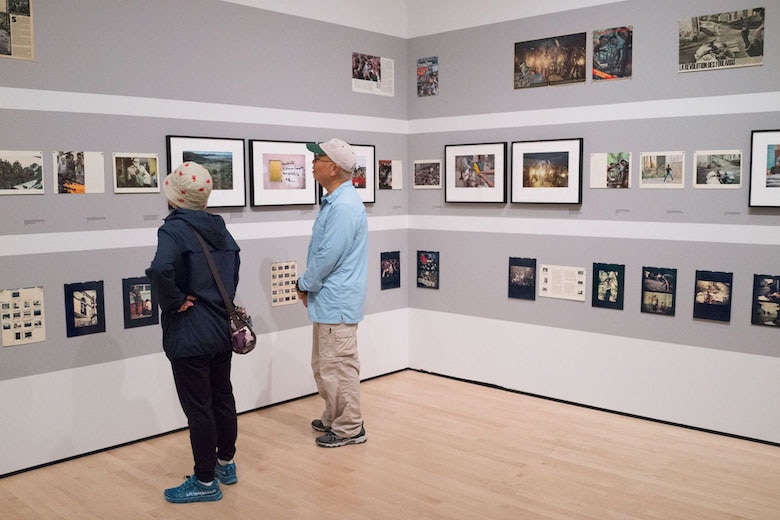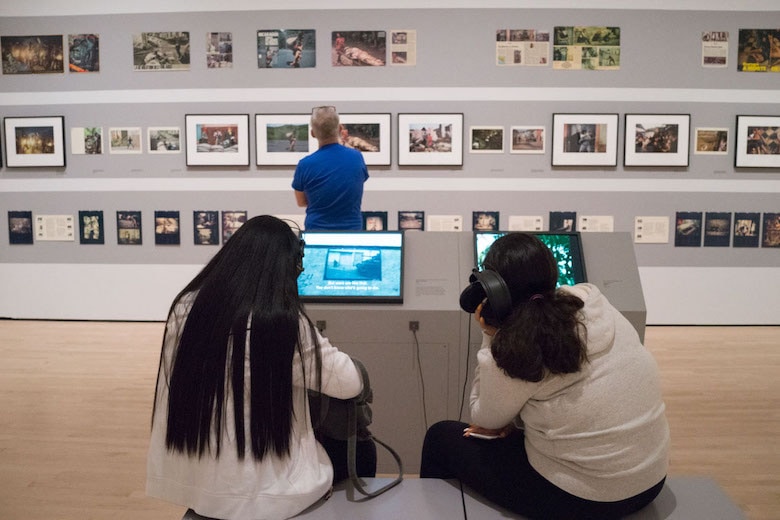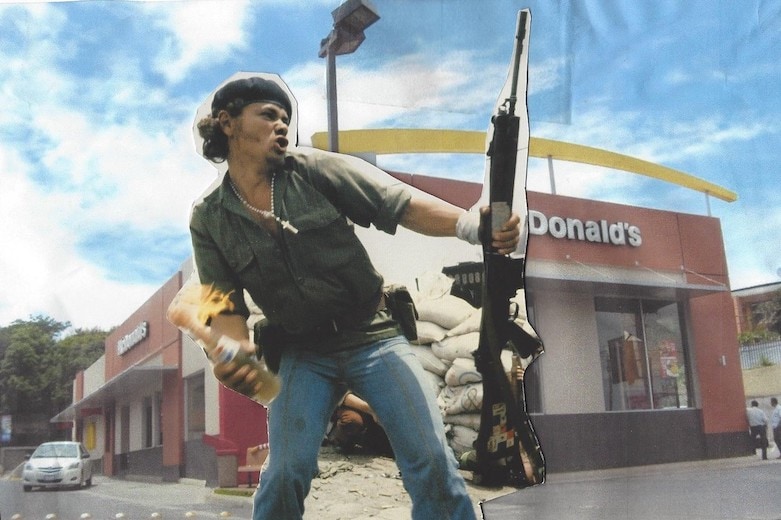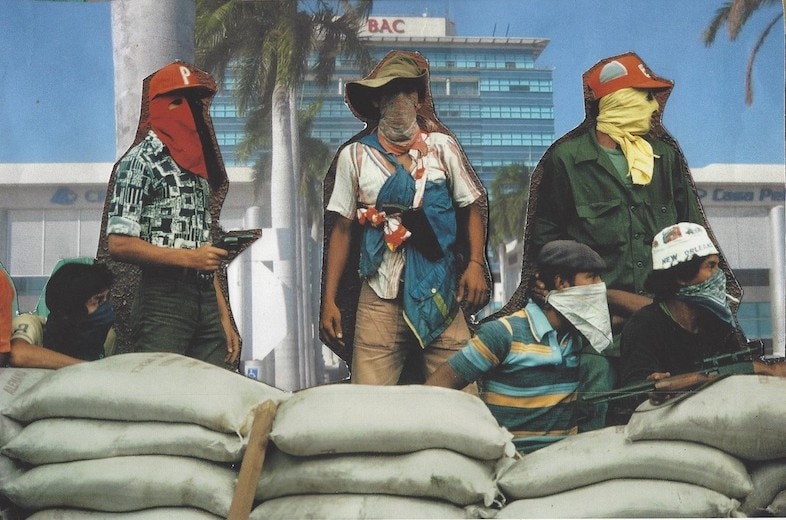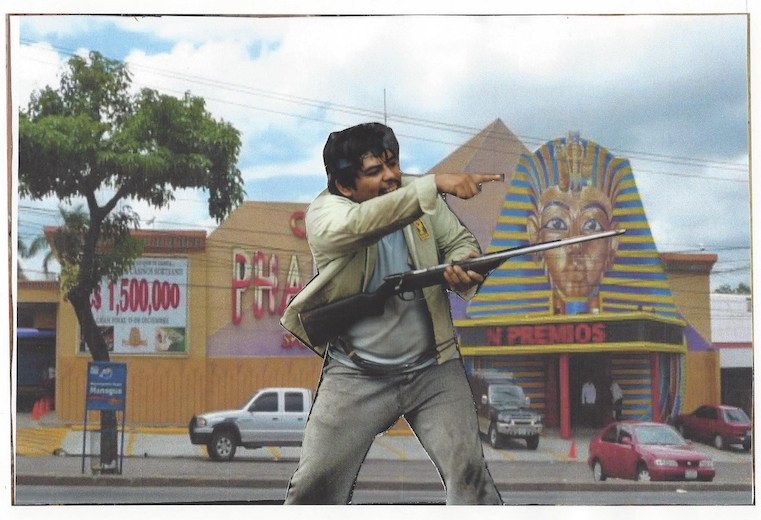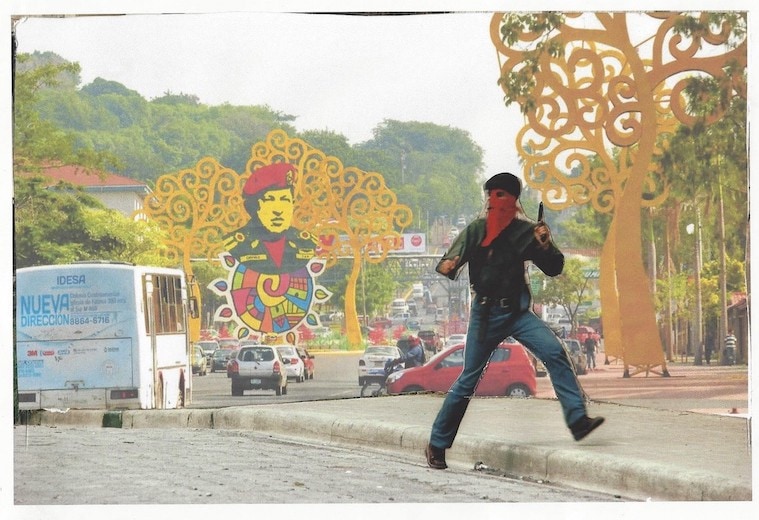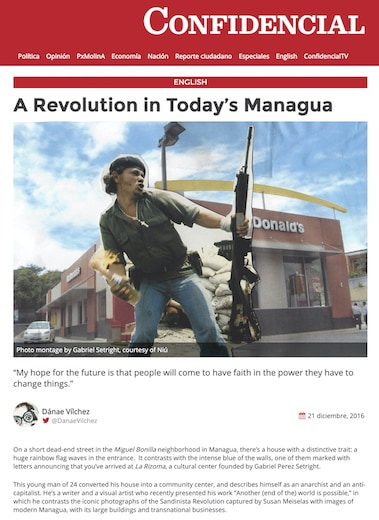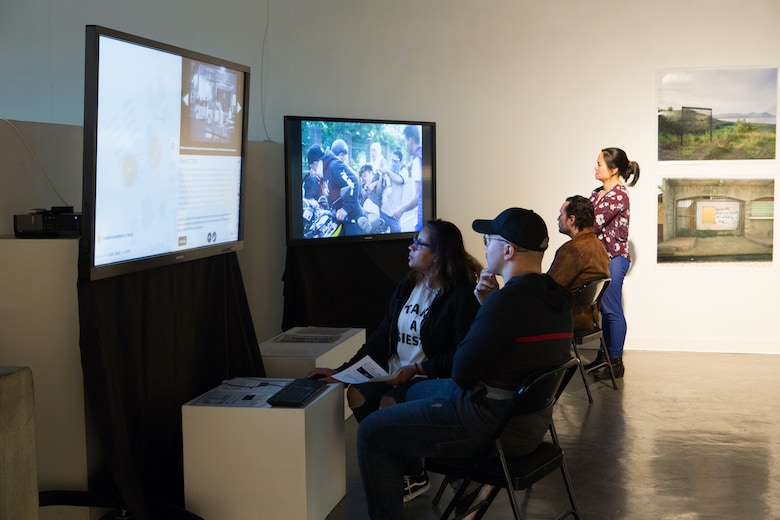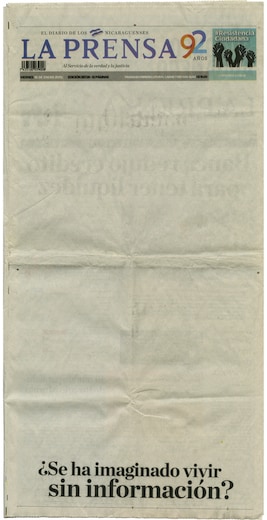Nicaragua 2004 - 2019
In July 2004, for the 25th anniversary of the overthrow of Somoza, Susan returned to Nicaragua with nineteen mural-sized images of her photographs from 1978-1979, collaborating with the Institute of History of the UCA (University of Central America) and local communities to create sites for collective memory. The project, "Reframing History," placed murals on public walls and in open spaces in the towns, at the sites where the photographs were originally made.
Reframing History at Bild Museet Umea Universitet
Sweden, 2006
After the Fact: First Festival in Photography
Berlin, 2006
In History at the International Center of Photography
New York, 2008
Mediations at Palau de la Virreina
Barcelona, 2011
Mediations (1978–1982) is based on Meiselas’s initial experience during the popular insurrection in Nicaragua. The selection process of her images for the publication Nicaragua: June 1978–July 1979 and the use of the same photographs by the mass media left her with many questions about how images are used in different contexts. Mediations retraces the history of these images and the contexts in which they have been published or reappropriated.
The middle row displays laminated pages from the first edition of the publication Nicaragua: June 1978–July 1979 and framed images from the book that were displayed in early exhibitions in an art context.
The top row displays laminated tearsheets from magazines and newspapers that published images Meiselas took in Nicaragua.
The bottom row displays laminated outtakes and laminated caption and text pages from the publication Nicaragua: June 1978–July 1979.
The Life of an Image: Molotov Man
1978 – 2009“Molotov Man” is a photograph from Susan Meiselas’ landmark 1978-1979 photo essay, Nicaragua, which documented the popular insurrection against the Somoza dictatorship through the final weeks of the Sandinista victory. The photograph of “Molotov Man” depicts Pablo 'Bareta' Arauz, throwing a Molotov cocktail at one of the last remaining National Guard headquarters in Esteli, one day before Somoza would leave Nicaragua. Immediately chosen for publication by international magazines, the image became a symbol of the Nicaraguan revolution, and subsequently the artist’s authorship of the image was shared.
- Galerie Lelong, 2013Just before the fortieth anniversary of the popular insurrection is Nicaragua, Meiselas reissued the book with an augmented reality (AR) function, bringing a selection of images to life via clips from the film Pictures from a Revolution (1991), in which she returns to the scenes she originally photographed, tracking down subjects and interviewing them, along with Reframing History (2004), a documentation of her return in 2004 with nineteen mural-sized images of her photographs from 1979, to collaborate with local communities to create sites for collective memory.
¿Cómo recordamos la Revolución partiendo del Urbanismo Neoliberal? Afirmamos que el pueblo Nicaragüense no tuvo una oportunidad para procesar la Revolución. La transición de los 80’s a los 90’s fue extremadamente violenta y veloz, plagada con un sentido de “…deja de hablar de la Revolución y comete una Big Mac.” ¿Que nuevos imaginarios podemos pensar cuando contrastamos la Nicaragua Revolucionaria con Revolucionariedad del Neoliberalismo?
How do we remember the Revolution from a Neoliberal Urbanism perspective? We affirm that the Nicaraguan people didn’t have an opportunity to process the Revolution. The transition from the 80’s to the 90’s was extremely violent and fast, fraught with a sense of “…stop talking about the Revolution and eat your Big Mac.” What new scenarios can we imagine if we contrast the Revolutionary Nicaragua with the Revolutionary Neoliberalism?
- Gabriel Pérez-Setright, Otro (fin del) Mundo es Posible or Another (end of) the World is Possible
Las fotografías de Meiselas son como Cicatrices.
Meiselas’ photographs are like Scars.
Las Cicatrices nos recuerdan y nos muestran de una herida. La cicatrices nos muestran de un evento que nos hizo sufrir de mucho dolor.
The Scars remind us of a wound. The scars show us that there was an event that caused a lot of pain.
Pero al mismo tiempo. Las cicatrices nos muestras de que pudimos sanar a estas heridas.
But at the same time. The scars show us that we could heal those wounds.
Estas son las fotos de Meiselas, nos muestran heridas y nos muestras que sanamos.
These are Meiselas’ photographs, showing us the wounds and the recovery.
Las Fotos de Meiselas son la Revolucion para mi.
Meiselas’ photographs are the Revolution for me.
Mi trabajo perverso con los montajes y ediciones a las fotos de Susan es la de quiere re-abrir estas cicatrices, echarle Limon a las Heridas, entender que paso, y si realmente logramos sanar. —no need to include ‘perverso,’ right?
I create photomontages with Susan’s photos as an attempt to re-open these scars, squeeze lemon on them, comprehend what happened, and see if we really healed.
I was sent via Facebook a juxtaposition of 2 pictures with 40 years separating them.
I was anxious to get on a plane. If I go, I know I will not be able to come back, I know I will be pulled into the current of history. It’s very hard for me now: do I pack my bag? For 12 years, I never unpacked it except to do laundry. - S.M.
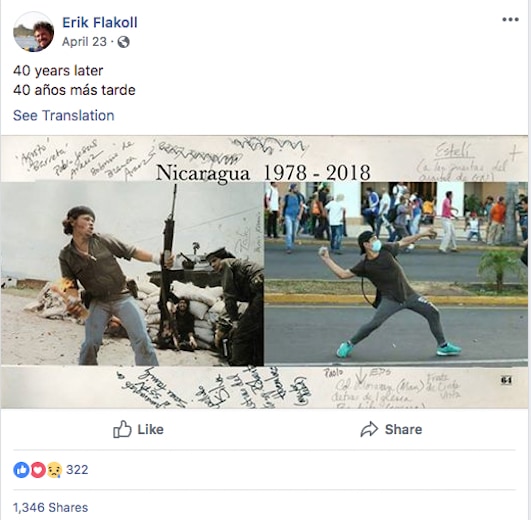
I went back to Managua in June of 2018, just as paramilitary groups closed in on student protesters occupying the National Autonomous University of Nicaragua (UNAN).
I just decided I had to be there, no matter how many other eyes were reporting to the world, I had to know for myself what the resistance was mobilized by, confronting and imagining collectively.
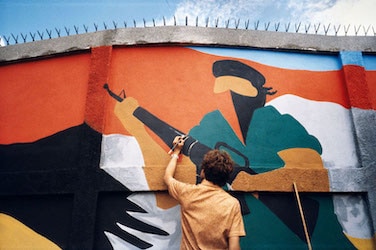

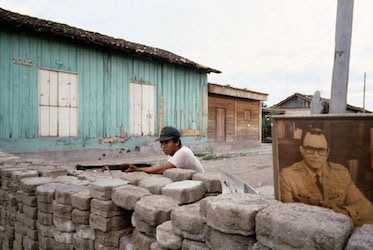
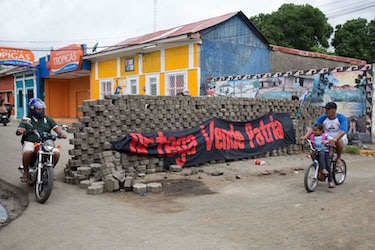
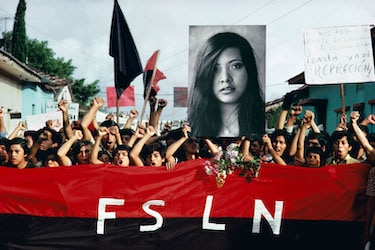
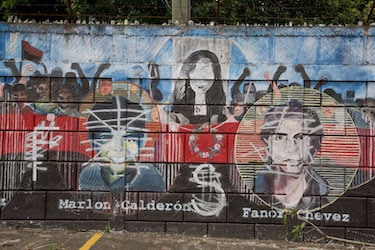
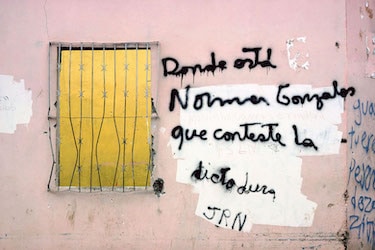
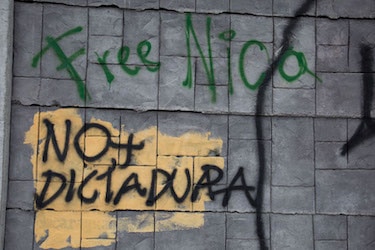
I decided to produce a postcard featuring the diptych of “Molotov Man” and an image from an anonymous photographer, of a protester in a similar stance, preparing to throw what appears to be a mortar round. On the other side is a new image I made of a young man, a scarf wrapped around his face to hide his identity, with graffiti being written on the wall behind him -- “SOS,” in black, while he writes, in red, “Las balas,” the bullets.
We’re always living history, except we think of it as daily life.
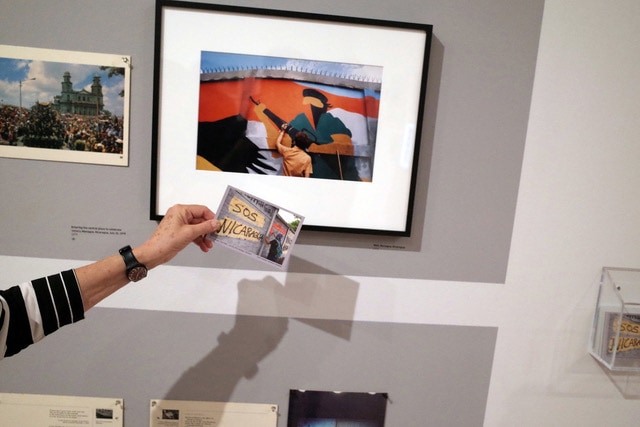
Nicaragua 1978–2018 at SUNY Old Westbury
Long Island, NY, 2019
…I believe that by organizing this exhibition, the UCA is fulfilling a role of utmost importance, which is preserving for present and future generations the historical memory of one of the most tragic yet also promising moments in our nation’s evolution. These seven months of civic rebellion, beginning on April 19th 2018, have signified a complete and irreversible change in the course of this country’s history…
Since 2007, the Nicaraguan people have witnessed a deliberate process of destruction of our democratic institutions, paving the way for one family to sequester the greatest concentration of power in our almost two hundred years of independence. This process set the stage for installing a new dynastic dictatorship in our country.
--Carlos Tünnermann Bernheim (excerpts from opening remarks)
Managua, November 15, 2018
…This exhibition will contribute to the “Recovery of Historical Memory” in our country, where an attempt is being made to impose an official narrative that contradicts what really took place, where victims are transformed into perpetrators of violence, and where the crimes of governmental repression are attributed to those who decided to rebel peacefully and civically, when faced with such egregious affronts to their dignity, and the violation of their human and political rights.
...the recovery of historical memory is a socio-cultural project aimed at preserving and sharing what really occurred, resisting the imposition of a false reality, and safekeeping testimonies so that history will accurately judge those who were the artifices of such horrific acts.
--Carlos Tünnermann Bernheim (excerpts from opening remarks)
Managua, November 15, 2018
January 18, 2019 published its cover in blank in protest against the refusal by the General Directorate of Customs (DGA) to hand over paper and ink imported by the Editorial La Prensa group, in Managua.
La Prensa, Nicaragua’s oldest newspaper, had a blank front page this Friday for the first time in its 93 years.
“Have you wondered about living without information?”
La Prensa Editorial has decided to release this publication today which marks 20 weeks since the General Directorate of Customs began restraining raw material from our company that arrived in Nicaragua in September 2018.”
The newspaper, which has a critical approach towards Ortega’s government, reported that “customs blocking” risks their future publications and qualifies as a “threat to the freedom of speech and access to information of Nicaraguans.”
Nicaragua’s independent press has been under government siege for reporting on the protests against Ortega that started on April 18, 2018. According to humanitarian groups, the government crackdown on protests led to 325 deaths and more than 600 people arrested.
